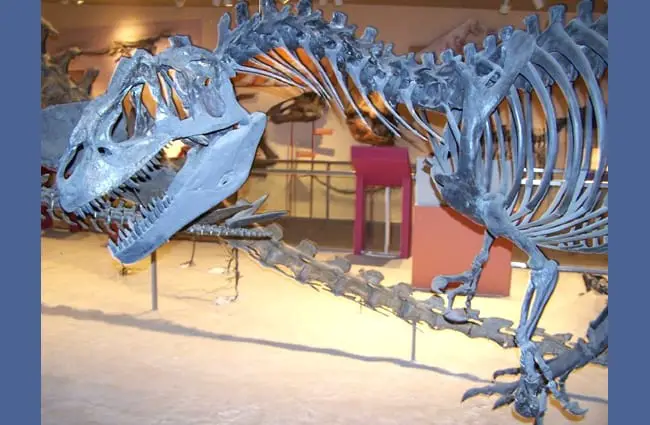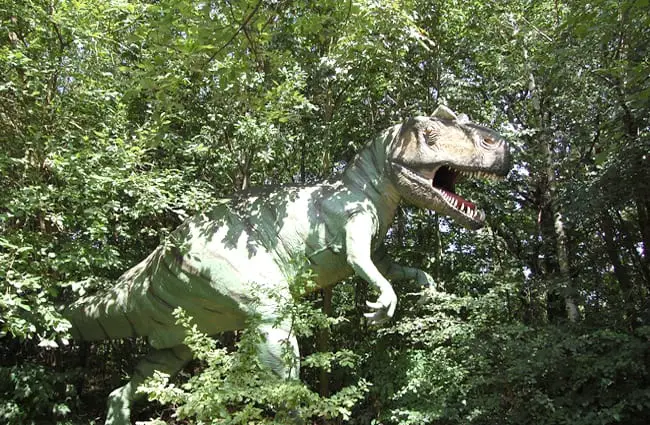A Deep Dive into the World of Allosaurus
The Late Jurassic period, roughly 155 to 150 million years ago, was dominated by colossal creatures, and among them, Allosaurus reigned as a formidable predator. Its name, meaning “different lizard,” hints at its unique characteristics that set it apart from other theropods. This article unravels the fascinating life of Allosaurus, from its physical attributes and hunting strategies to its place in the ecosystem and enduring legacy.

The Anatomy of a Jurassic Predator
Allosaurus was a large theropod, typically reaching lengths of 8 to 12 meters (26 to 39 feet). Estimates suggest weights between 1.5 and 4 metric tons. While not as massive as some later theropods like Tyrannosaurus rex, Allosaurus was still a powerful and efficient hunter. Its most striking features included a large skull with prominent ridges above the eyes, likely for display or structural support. Sharp, serrated teeth, although not as robust as those of T. rex, were perfectly adapted for slicing through flesh.
Its forelimbs were relatively small, but ended in three sharp claws that could grasp prey. The hindlimbs were powerful, enabling it to run at considerable speeds. Allosaurus had distinctive nasal crests and bony ridges. While their exact function remains debated, the prevailing theory suggests they served for intraspecies communication, potentially as visual signals or to amplify vocalizations. Air sacs within the skull, similar to those found in modern birds, suggest the capacity for sound production, potentially aiding in vocal communication.
Habitat and Distribution
Fossil evidence indicates that Allosaurus primarily inhabited western North America, with remains found in Colorado, Wyoming, Montana, and Utah. The environment was a semi-arid landscape characterized by lush fern meadows, conifer forests, and large river systems. This habitat provided ample prey for Allosaurus, including stegosaurs, sauropods, ornithopods, and other smaller dinosaurs.

The presence of Allosaurus fossils in the Morrison Formation, a rich geological deposit, suggests it was a dominant predator throughout this region for a considerable period. Interestingly, Allosaurus fossils have also been discovered in Portugal, indicating a wider geographical distribution than initially believed, though the Portuguese specimens belong to distinct species.
Diet and Hunting Strategies
As a carnivore, Allosaurus occupied the apex predator niche in its ecosystem. Its diet likely consisted of a variety of dinosaurs, but its preferred prey remains a subject of ongoing research. Stegosaurs, with their distinctive plates and spiked tails, were common targets, and fossil evidence suggests frequent clashes between the two species. Sauropods, massive long‑necked herbivores, were also potential prey, though taking down such a large animal would have been a significant challenge.
Several hypotheses exist regarding Allosaurus hunting strategies. Some paleontologists propose that it was a lone hunter, relying on ambush tactics and bursts of speed. Others suggest that it may have hunted in packs, coordinating attacks to bring down larger prey. Evidence supporting pack hunting includes the discovery of multiple Allosaurus skeletons at the same site, though this could also represent a feeding aggregation. Bite marks on both Allosaurus and its prey indicate that it engaged in fierce battles when necessary.

Reproduction and Life Cycle
Understanding the reproductive strategies of Allosaurus is challenging due to the scarcity of fossilized eggs or nests. However, based on comparisons with other theropods, it is believed that Allosaurus laid eggs, likely in nests lined with vegetation. The size of the clutch is unknown, but it is plausible that several eggs were laid at a time. Parental care is also a possibility, though direct evidence is lacking.
Determining the lifespan of Allosaurus is difficult, but estimates suggest they lived for around 20 to 30 years. Growth rates likely varied depending on food availability and environmental conditions. Skeletal analysis reveals growth rings, similar to those found in trees, providing insights into age and growth patterns. Juvenile Allosaurus likely faced numerous challenges, including predation by larger theropods and competition for resources.
Allosaurus in the Ecosystem
Allosaurus played a crucial role in maintaining the balance of its ecosystem. As an apex predator, it controlled herbivore populations, preventing overgrazing and ensuring the health of plant communities. Its scavenging behavior also helped to clean up carcasses, reducing the spread of disease.
The presence of Allosaurus influenced the evolution of other dinosaurs. Herbivores developed defensive mechanisms, such as armor plating and spiked tails, to protect themselves from predation. This predator‑prey relationship drove the diversification of dinosaur species and shaped the characteristics of the Late Jurassic ecosystem.

Allosaurus and Human Culture
The discovery of Allosaurus fossils has captivated the public imagination for decades. It has become a popular subject in museums, documentaries, and fictional works, such as the Jurassic Park franchise. This exposure has fostered a greater appreciation for dinosaurs and the prehistoric world.
Fossils of Allosaurus are highly prized by paleontologists and collectors. They provide valuable insights into anatomy, behavior, and evolution, and serve as a reminder of the incredible diversity of life that once existed on Earth.
Encountering an Allosaurus (A Hypothetical Guide)
Encountering an Allosaurus is impossible today. However, if time travel were a reality, or you stumbled upon a remarkably well‑preserved specimen suddenly animated, here’s what ‘not’ to do: avoid direct eye contact, maintain a safe distance, do not attempt to feed it, do not run (it’s faster), seek immediate shelter behind a large, solid object, and remember that it is a powerful predator with sharp teeth and claws.
Zookeeping Considerations (A Fanciful Scenario)
In a hypothetical situation, an Allosaurus enclosure would require immense space, robust fencing, and a climate‑controlled environment mimicking the Late Jurassic period. Diet would consist of large quantities of meat, supplemented with essential vitamins and minerals. Enrichment activities would be crucial to stimulate natural behaviors, such as scent marking, hunting simulations, and puzzle feeders. Expert veterinary care would monitor health and address medical concerns. Extensive safety protocols would protect both the animal and zookeepers.

Fascinating Facts About Allosaurus
- Allosaurus lived during the Late Jurassic period, approximately 155 to 150 million years ago.
- It was one of the largest theropod dinosaurs of its time, reaching lengths of up to 12 meters.
- Its name means “different lizard,” referring to its unique vertebral structure.
- Fossil evidence suggests that Allosaurus may have hunted in packs.
- The function of its nasal crests is still debated, but they may have been used for display or communication.
- Allosaurus fossils have been found in North America and Portugal.
- It preyed on large herbivores, such as stegosaurs and sauropods.
- Its bite force was not as strong as that of Tyrannosaurus rex, but it was still formidable.
- Allosaurus played a crucial role in maintaining the balance of its ecosystem.
- It continues to fascinate scientists and the public alike.
The story of Allosaurus is a testament to the incredible diversity and evolutionary history of life on Earth. Its fossils offer a glimpse into a world long gone, reminding us of the forces that shaped the planet and the creatures that once roamed its lands. Continued research promises to unlock even more secrets about this magnificent predator, further enriching our understanding of the prehistoric world.

![Red Angus Closeup of a beautiful Red Angus cowPhoto by: U.S. Department of Agriculture [pubic domain]https://creativecommons.org/licenses/by/2.0/](https://animals.net/wp-content/uploads/2020/03/Red-Angus-4-238x178.jpg)




![Red Angus Closeup of a beautiful Red Angus cowPhoto by: U.S. Department of Agriculture [pubic domain]https://creativecommons.org/licenses/by/2.0/](https://animals.net/wp-content/uploads/2020/03/Red-Angus-4-100x75.jpg)

